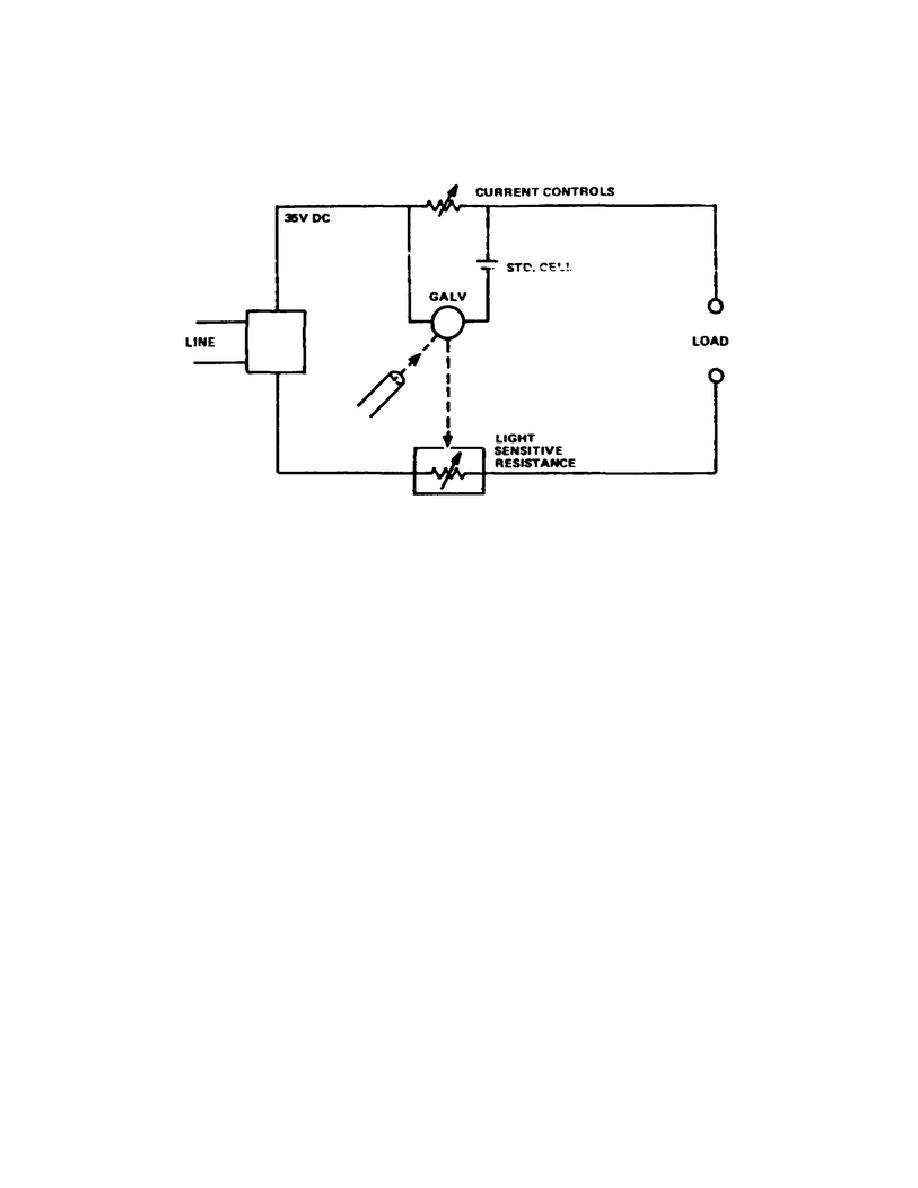
e. The variable resistor shown in Figure 2-7 is, in practice, the four
thumbwheel switches and the fine current control.
These provide the
necessary resolution and resetability to allow the selection of any desired
current from 27 to 33 mA.
Figure 2-7.
Simplified schematic diagram
Learning Event 3:
DESCRIBE THE MODEL 9460A NANOVOLT AMPLIFIER
1.
Functional description.
The Model 9460A Nanovolt Amplifier is
designed for amplifying very low level dc signals of nanovolt and nanoamp
levels.
a. The output is linear over the operating range and can be used to
drive most potentiometric recorders or digital voltmeters.
b. Because of its high current sensitivity, it is ideally suited for
operation as a null detector when used in conjunction with the Guildline
Model 9461A Secondary Galvanometer or other null indicators. An important
feature of the Model 9460A is that the polarity of the input signal may be
reversed in order to balance out parasitic or thermal EMF in the measured
circuit.
In this respect the amplifier is much superior to electronic
detectors employing ac amplifiers. The detector element is heavily damped
and does not respond to transients or frequencies higher than a few Hertz.
c. To avoid instability or zero drift, precautions have been taken to
eliminate temperature gradients across junctions of dissimilar metals.
A
high insulation resistance is maintained with near infinite common mode
rejection and the copper input output terminals are shielded from air
currents by a removable cover to reduce the generation of thermal EMFs.
29



 Previous Page
Previous Page
